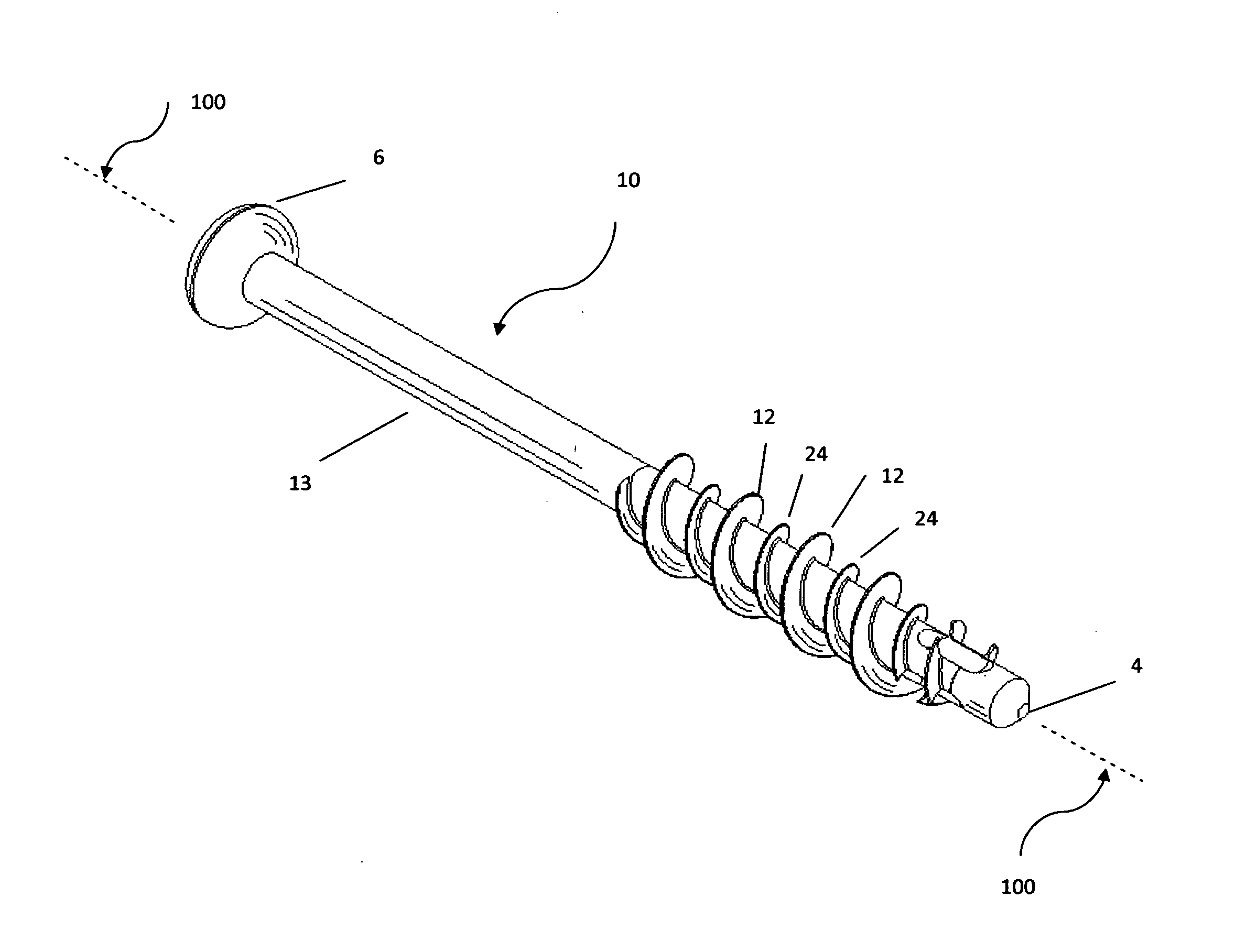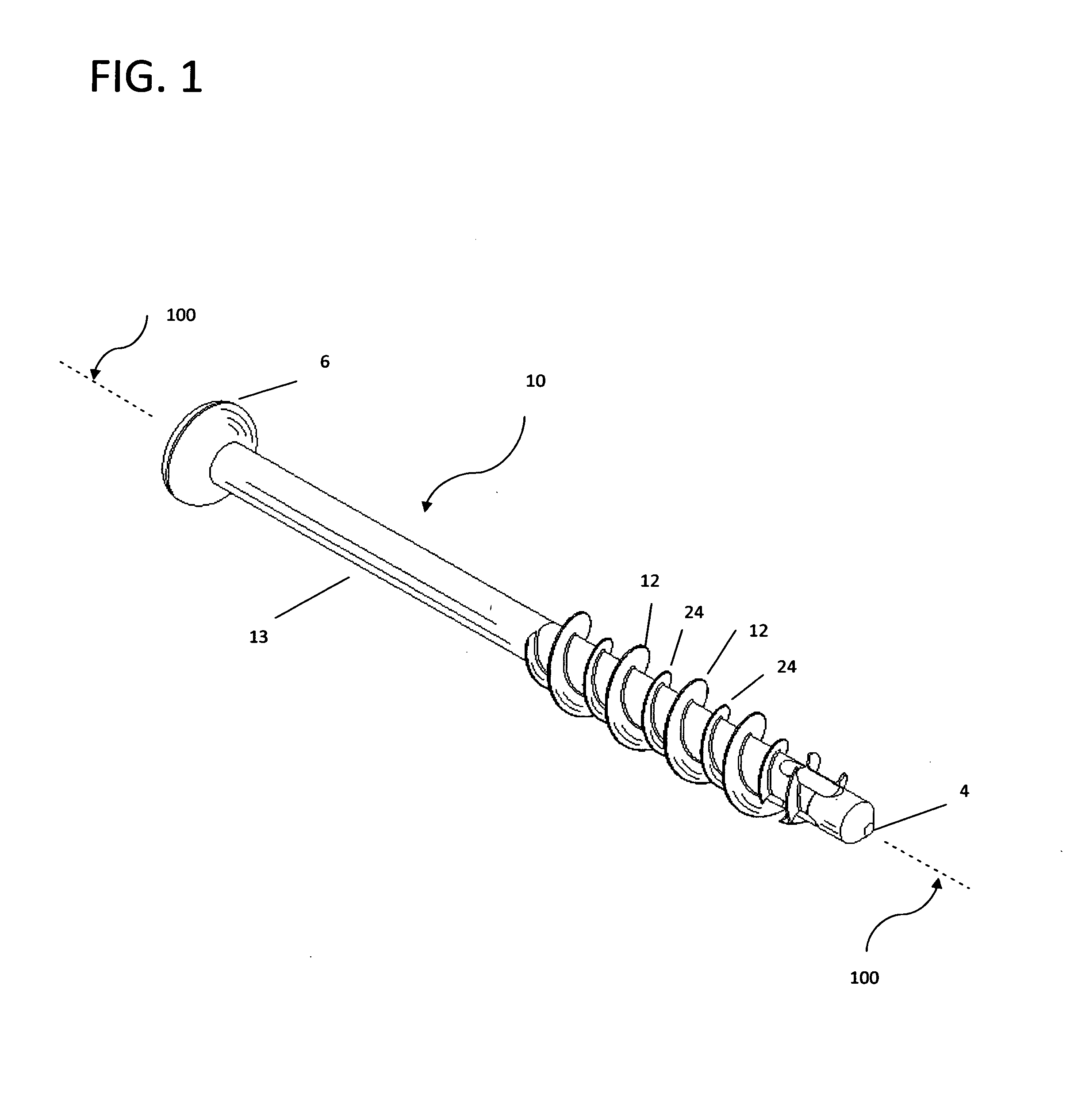Medical fastener
a fastener and medical technology, applied in the field of fasteners, can solve the problems of inability to address the non-homogeneity of bone under dynamic loading, limited holding power of the screw (e.g. pull out strength), and prior art buttress threads (the industry standard) cannot address the problem of confounding fastener issues, etc., to achieve the effect of facilitating fastener removal, increasing surface area, and reducing the number of screws
- Summary
- Abstract
- Description
- Claims
- Application Information
AI Technical Summary
Benefits of technology
Problems solved by technology
Method used
Image
Examples
Embodiment Construction
[0058]Referring to the drawings, where like numerals reflect like parts, reference numeral 10 is directed to the fastener (screw) of the present invention. The screw 10 has an elongate shaft 13, substantially cylindrical along its length with a linear long axis 100 at its center. The screw may have a head 6 provided with a drive face 5 on its top surface. The face 5 can be contoured to accommodate a drive socket, screw driver tip, “torx” fitting, alien wrench, etc. to advance the screw.
[0059]A plurality of thread flights is contemplated, and the drawings illustrate a two flight embodiment. A first flight having a first thread 12 displays a greater crest diameter than a second flight having a second thread 24. Preferably these two flights are spaced from each other by 180 degrees and enjoy the same pitch. Accordingly, FIG. 7 shows that in section, a first major crest thread 12 always is diametrically opposed by a second minor crest thread 24 all along the thread paths. Bone “teeth” (...
PUM
 Login to View More
Login to View More Abstract
Description
Claims
Application Information
 Login to View More
Login to View More - R&D
- Intellectual Property
- Life Sciences
- Materials
- Tech Scout
- Unparalleled Data Quality
- Higher Quality Content
- 60% Fewer Hallucinations
Browse by: Latest US Patents, China's latest patents, Technical Efficacy Thesaurus, Application Domain, Technology Topic, Popular Technical Reports.
© 2025 PatSnap. All rights reserved.Legal|Privacy policy|Modern Slavery Act Transparency Statement|Sitemap|About US| Contact US: help@patsnap.com



